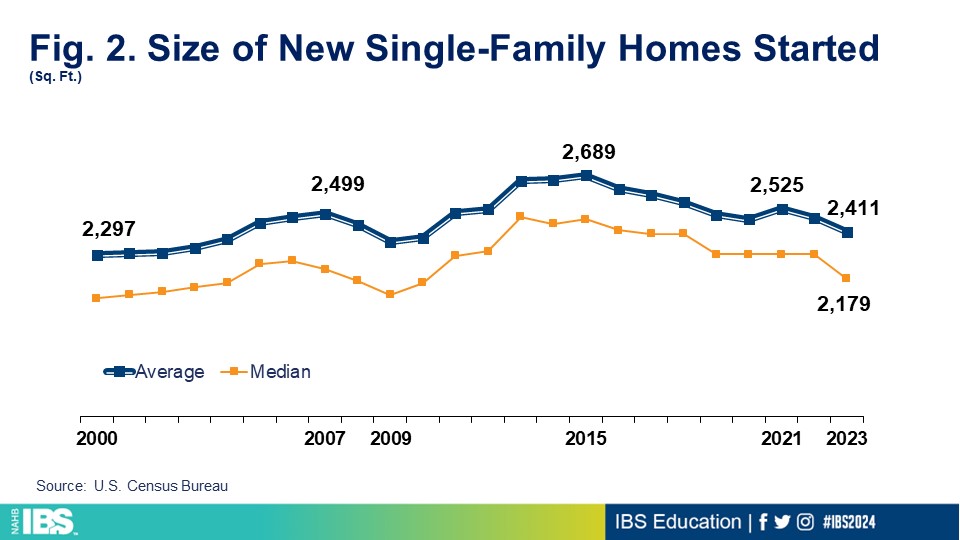Continuing NAHB’s commitment to be at the forefront of research on home buyer preferences, the 2024 edition of What Home Buyers Really Want was recently released at the International Builders’ Show. The primary objective of the study is to provide builders, manufacturers, architects, and the general residential construction industry with a thorough analysis of what buyers are looking for in their homes and communities. Because of the inherent diversity in buyer backgrounds, the study provides granular specificity based on demographic factors such as generation, geographic location, race/ethnicity, income, and price point.
The study reveals that buyers want smaller homes than they did 20 years ago. In 2003, the typical home buyer wanted 2,260 square feet of finished area. In 2023, that number was down to 2,067 square feet. Figure 1 shows there has been a permanent downward shift in buyer preferences for home size. From 2003 to 2012, the typical buyer wanted to buy a home ranging in size from 2,200 to 2,300 square feet. Since 2015, that range dropped to between 2,000 and 2,100 square feet.

Data from the U.S. Census Bureau on the size of new homes confirm they have been shrinking for nearly a decade. The average size of new homes started in 2023 dropped to 2,411 square feet (the smallest in 13 years), continuing a downward trend that began in 2015 when average home size peaked at 2,689 square feet. The only year that saw home size increase during this period was 2021, due to the pandemic-induced desire for additional space to work/study from home and the low interest-rate environment that allowed buyers to purchase those bigger homes. But the decline in average home size resumed in both 2022 and 2023. Importantly, the median size of new homes has also trended down for a decade, reaching 2,179 square feet in 2023.

This is the first of a series of posts over the next few weeks that will cover the most important findings in the latest What Home Buyers Really Want, 2024 Edition. The study is based on a national survey of more than 3,000 recent and prospective home buyers, selected to proportionally represent of the US population in terms of age, income, race/ethnicity, and region of the country.

